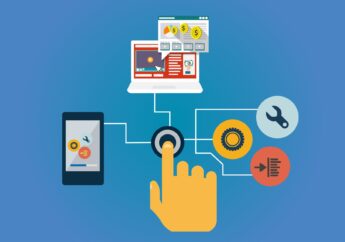Accelerating eCommerce: Growth with Headless Commerce
by Abdul Aziz Mondal Ecommerce 02 April 2022

When defined at its simplest, headless commerce implies that it is based on a platform deliberately lacking a frontend. While your back-end-enabled platform remains running on a dedicated server, the customer-facing frontend — that is, your workhorse of a web page — is kept functioning separately.
If that sounds easy and appealing, it is high time to read up on what is headless commerce and the principles behind it all. Opting for headless is widely considered as having drastically beneficial effects on the way a brand manages and uses the software.
Upgrading your platform to headless
Architectural revolution in the backend commerce is going on right as we speak.
Surveys indicate that the retail market is hot for switching to headless. For instance, a study conducted by Digital Commerce 360 in January 2022 showed that 61% of B2B sellers put enhancing their eCommerce platforms as the top three priorities for technological improvements planned for the year.
Furthermore, TotalRetail has shown that “headless” sellers receive a benefit in the form of a 32 percent boost to their organic traffic after implementing AMPs. Naturally, they get to extend their reach to a wider audience, which ultimately pushes up the conversions.
Finally, Sturrock is here to give confidence to those of us worrying about the future. Their reports show that headless commerce had been gaining a firm footing even before the COVID-19 pandemic. While it sure has grown in prominence during these two years of isolation, there are all signs that the trend is here to stay. The increased load on e-commerce in that period simply made urgent what eventually had to come on its own.
Advantages of headless commerce
1. Performance
The front end gives you the reins to productivity. Any retailer who has been annoyed by the loading speed of Shopify knows just how much he/she can do about it (spoiler: nothing). Both servers and frontend that slows you down belong to them. How about revamping your BigCommerce platform? Easy enough. Just look into your HTML and optimize server performance.
2. Experimentation sandbox
No need to tinker with the backend as long as you can test drive designs and marketing techniques on your new headless structure. Your pages will actually remain active and available to customers while you develop them on the go.
3. Swift reaction
Catching up with innovations has never been easier. A marketer literally has all the frontend experiences at his/her fingertips. With a couple of taps and swipes and you already are working from a new channel or adjusting to new trends. All because now, there is no backend development to make you drag your feet.
Does headless suit your business?
A rule of thumb dictates that having an able team of engineers and a strong preference to attain omnichannel excellence is a good enough justification for one to dive headless.
Of course, deep knowledge of your customer is a must. Your buyers’ presence in the existing channels and their anticipation for new ones should be the #1 priority among what informs your business solutions.
a. Testing for compatibility
Still in doubt as to pros and cons? Check this brief questionnaire below. Any three yeses or nos will give you an idea of how to proceed.
- Do you work or plan to work with multiple eCommerce channels?
- Do you have sufficient developer staff to manage the tech stacks?
- Will your buyers appreciate customized and tailored experiences?
Or maybe…
- Are you just in need of a simple low-key eCommerce site?
- Is low maintenance your key priority and not scalability?
- Do you lack proper experts versed in your subject and in-house teams in general?
b. Does headless commerce sit well with B2B companies?
B2B commerce rapidly populates a variety of digital channels. All this is due to the fact that customers’ demands constantly grow and shift towards flexibility and multi-feature commerce solutions.
With headless commerce, B2B sellers have the ability to reorient and improve the design of their pages in a very effort-effective manner. You can both personalize the content better, having no limits to added features, and surface the products to your clients on their own terms.
Verdict
Ecommerce integration comes to be the tried-and-true approach for accelerating most businesses. No more discordance and pulling in different directions — brands should be organized around tightly united experiences. Headless commerce brings in the one-stop solution to keep your brand clean of all clunky bits and pieces while giving it an aerodynamic shape.
Going headless unlocks a huge vanguard potential in already powerful enterprises. Smaller brands, of course, may deem the transition requirements a bit steep. However, as soon as they find a way to integrate their tools into one seamless headless system, they have a firm path of continuing innovation before them.
When considering headless eCommerce options, you should begin not with their benefits, but with what it demands of your tech team. Getting the right people and right nerve usually proves the most important when deploying headless as a means to accelerate your brand.
Read Also:









































































































